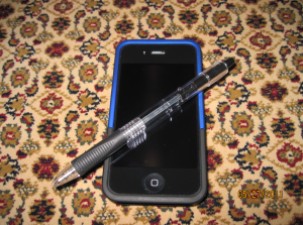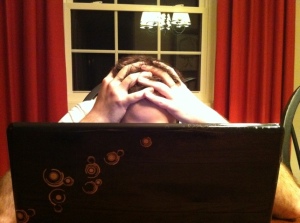Remember Happy Meals?
I do.
All meals have the potential to be happy, at least the ones that do not contain kale or anything else that belongs on a tree. But a Happy Meal can come only from McDonald’s.

A Happy Meal was designed for children. The food of the Happy Meal, to the extent it could be called food, was no more or less happy than a regular meal at McDonald’s. If you counted the effects of age on the alimentary canal, the food was probably much happier for children.
The Happy Meal’s happiness was in the packaging. The burger and fries came in a little cardboard box with artwork and puzzles on the sides, and closed up at the top with a handle in the shape of double arches. Inside the box, alongside the meal, was a toy, a small plastic piece of junk that would spend ten minutes in my hands, and 10,000 years in my parents’ basement.
I insisted upon Happy Meals every time. The design and theme of the box and toy would change every few weeks or months, and I had to have the new one. Sometimes the theme was based upon a movie that McDonald’s thought would increase the desire for sugar, salt, and fat. Other times it was seasonal, like a Halloween themed box with witches riding french fries against a full moon.
The boxes were shaped so that one could be fit inside another, and stacked as high as the laws of physics would permit. After a few months I had stack of Happy Meals taller than I was. It was my monument to life. Sometimes I would sit in my room and look at my tower, and imagine it reaching to the sky, with a spiral staircase leading up to an observation deck and souvenir shop with snow globes containing miniature versions of my Happy Meal tower.
When the tower reached the ceiling of my bedroom, I started another one. Before long I had a city, Hamburglars and Grimaces watching over me like cathedral gargoyles. I was re-zoning the downtown when my parents finally said something.
“Mark, we need to talk about your Happy Meal boxes,” they said. “We think they are a fire hazard and your grades are suffering.”
I was having a little trouble seeing them around the towers of Happy Meals. One of the boxes was decorated like a house, and had a perforated window that I opened to watch my parents leaving my room, shaking their heads.
Unable to reach my family, I invited my friends to see my work. “Thanks for coming over, Clarence. Please sit over here by the East Tower. Oh wait. I had to remove the chair to make room for the pavilion and carousel. I guess you’ll have to stand.”
After a while my parents stopped coming in my room. They would leave my dinner outside my door and knock three times, so that I knew it was not other kids trying to steal my Happy Meal boxes. Although the only dinner that held any interest for me was a Happy Meal.
My parents had stopped taking me to McDonald’s, though, forcing me to rely on other parents. I would tutor their dim children in math or social studies in exchange for rides. Even when my parents cut off my allowance, I managed to scrape enough change together by recycling soda cans that I found in the garbage bins at school. My teachers thought I was setting a great example, and gave me an “Enviro-Kid” award that I taped to my bedroom wall, facing the Ronald McDonald Senior Living Center that I had erected next to my hamper.
I came home late one night with my latest acquisition—a Roman Empire themed Happy Meal, decorated like the Coliseum, with lions dipping gladiators in sweet and sour sauce—to find my whole family sitting in a brightly lit living room.
My father stood up, walked over to me, and gently took my Happy Meal from my hands. My mother gave me hug and directed me to the sofa next to her. My brother, a good four inches taller than the last time I’d seen him, looked worried. The cardiganed man on my other side, who introduced himself as Dr. Burger, said that he was there to help.
I looked at the ground and saw a suitcase. This was actually happening. I asked if I go up to my room and get something. Dr. Burger said that I could not, and my family nodded in agreement. They wouldn’t even let me see my boxes one last time.
I was taken to the Ronald McDonald Home for Wayward Teens, and shared a room with a young man who was battling addictions to methadone and the little animal figurines that came in boxes of Red Rose tea. For weeks I was under constant surveillance, and if I tried to stack something on top of something else, I was given a shot of electricity and placed on the “no dessert” list for that night.
I was so happy when it was time to go home that I did not notice the back roads route we took to avoid the strip of fast food restaurants. There was a “Welcome Home” banner above our television, and a wide open space on my bedroom floor. It was like being in another kid’s room.
The other day I saw a boy carrying a Happy Meal, probably made from recycled Chicken McNuggets. The boy looked happy. I hope I did too.
Thanks to Jay Kaplowitz for the topic.





